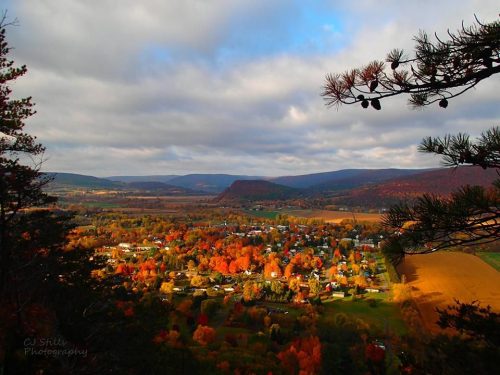A Brief History of the town of Middleburgh
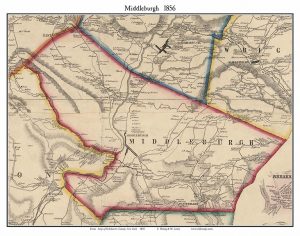 Submitted by Charley J. Spickerman
Submitted by Charley J. Spickerman
Town Historian
The Town of Middleburgh was originally settled by a group of German Palatines led by Johan Conrad Weiser in 1712; making it one of the oldest settlements in Schoharie County.
The original settlement, Weisersdorf, consisted of forty log and earth huts which ran along a brook from the high school to across the street from Memorial Park. Soon, the surrounding land was cleared for crops and the first grist mills appeared.
In 1734, the first Dutch Reformed Church was constructed on the southern end of the settlement. By the time of the American Revolution; the valley was producing eighty thousand bushels of grain making it known as the “Bread Basket of the Revolution”.
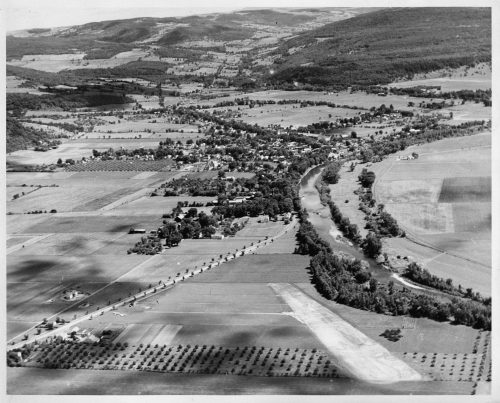
During the Revolution there were constant threats from Tories and Indians. After the Chrysler/McDonald raid of 1777, three forts were constructed in the Schoharie Valley. The largest was the Middle Fort; which enclosed three acres around the Johannes Becker stone farmhouse just north of the present village. It would serve as refuge for the local citizens and headquarters for the military in the Schoharie valley during the War.
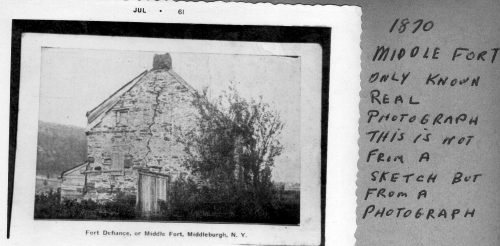
It withstood a six to eight hour siege on October 17, 1780. A force of British, Tories and Indians under Sir John Johnson bypassed the Upper Fort near Fultonham in the hopes of quickly taking the Middle Fort. Three times Johnson sent out a flag of truce to discuss surrender of the fort and three times the white flag was sent back by fire from Timothy Murphy. Major Woolsey, the continental officer in command, turned over leadership to militia Col. Peter Vroman because he was unable to control the actions of Murphy, David Ellerson, Martinius Zelie and other local militiamen. Johnson’s Raid would leave “Weyserstown” and many of the farms and crops of the surrounding area in ashes.
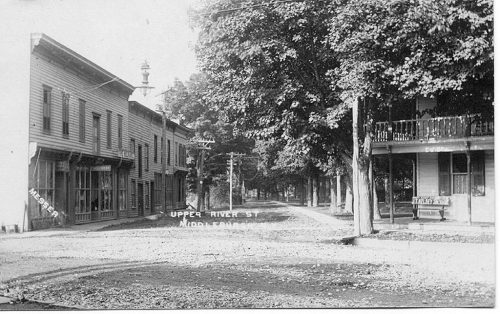
A new village would be built after the war closer to the fort around the second Dutch Reformed Church, which still stands. It would be known as “Middletown” later changed to Middleburgh, officially with an “h”.
The Town of Middleburgh was formed on March 17, 1797. It included the present Town of Fulton, which was separated in 1828. The primary occupation of the people was farming and much of the surrounding hills were cleared. There were grist mills, saw mills and tanneries on the Schoharie Creek and its tributaries. In the valley were two foundries, a paper factory, a nail factory, a broom factory, and wagon builder.
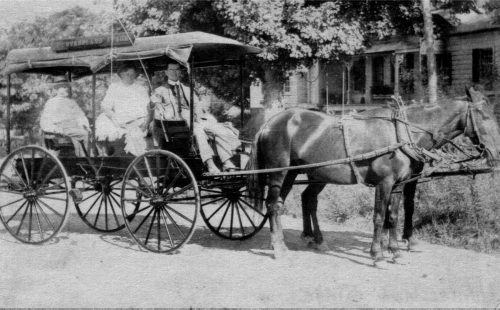
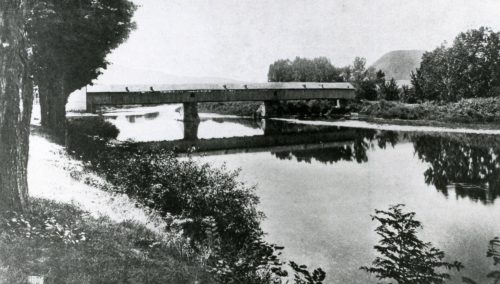 During the first half on the 19th century, cattle would by driven through Middleburgh via the Loonenburg Turnpike (Today Route 145) from western New York to New York City. A bridge and tollhouse was constructed to span the Schoharie at the location of the current bridge in 1813.
During the first half on the 19th century, cattle would by driven through Middleburgh via the Loonenburg Turnpike (Today Route 145) from western New York to New York City. A bridge and tollhouse was constructed to span the Schoharie at the location of the current bridge in 1813.
Inns and hotels also sprung up along the turnpike. The largest of these were the Bull’s Head Tavern on the southern end of the present village, which could accommodate both man and beast. The White House was located where Apple Food is, and the Freemeyer House, later the Hotel Baker, stood where the new library is today.
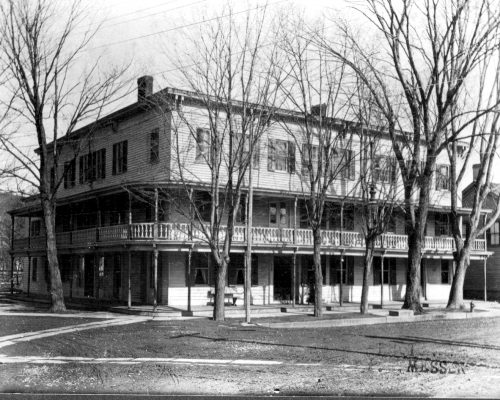
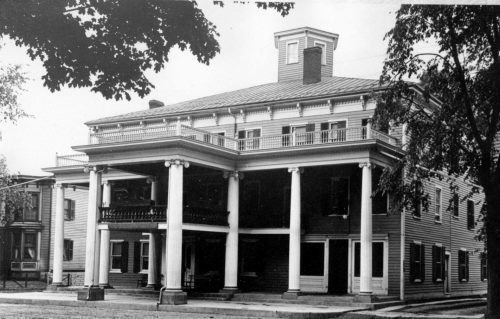
During the Civil War, the town of Middleburgh furnished 289 volunteers out of a voting population of 740. This represented the second highest proportion of servicemen for a town in New York State. Company I of the 76th NY was mostly men from Middleburgh. Others enlisted in the 134th NY, the regiment raised from Schoharie County. Politically, the town of Middleburgh and Schoharie County were viewed as “Copperhead” areas due to Democratic leanings and opposition to some of the policies of the State and Federal governments.
During the latter half of the 19th Century and into the early 20th, small family farms still drove the local economy. Hops became the major cash crop until blight and prohibition until the early 1900’s. The village of Middleburgh was incorporated in 1881.

Much of the present business district of the village was completed during this period and small shops and businesses filled the store fronts along Main Street and Railroad Avenue. Keeping with the technology of the times, the Middleburgh & Schoharie Railroad was constructed in 1867, the First National Bank of Middleburgh was formed in 1880, the Middleburgh Telephone Company founded in 1897, and M&S Power and Light was providing the villages of Middleburgh and Schoharie with electricity around the turn of the century. The Middleburgh Water Company constructed and ran the water system for the Village of Middleburgh. The year 1900 saw a thriving community.
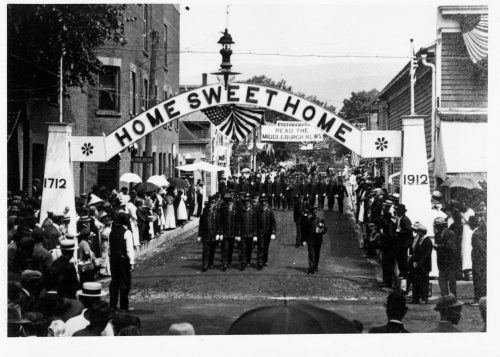
The years after the Great Depression brought many changes to the town and village of Middleburgh. The Power Company became part of a larger entity which became Niagara Mohawk. The railroad ceased operations in 1936. The Hotel Baker burned in 1942. The local bank became part of Central National Bank in the 1950’s. Many of the small farms disappeared and returned to forests or became housing subdivisions. The improved roads and the automobile brought competition from larger stores and shopping malls outside the area. As a result; many of the small businesses became part of the past. Many natives of the area for generations have left and have been replaced by people from other areas.
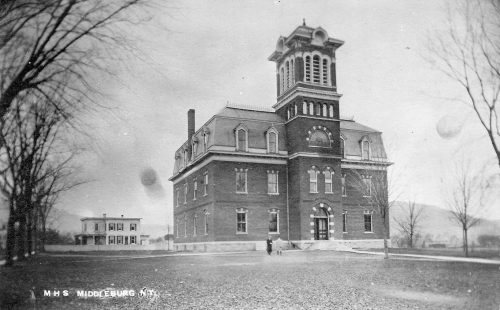
During the early years of the 21st century; a renewed effort got underway to revitalize the Middleburgh area. A new public library has been constructed on the site of the old Hotel Baker. The beautiful wall along River Street has been rebuilt with the added feature of Victorian style lighting.
There have been repairs and improvements to the Middeburgh Cemetery. The Town Hall Has been renovated. The School District buildings have been expanded and modernized.The bridge has been beautifully renovated with the addition of the same lighting as on River Street. Many Main Street buildings have been improved via owner efforts with asistance from grant and loan programs. Many new homes have been built in the hills outside the Village.
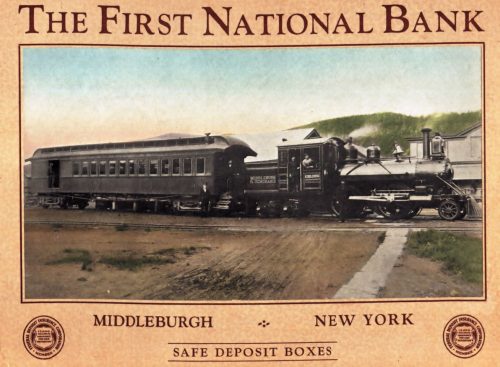
The momentum of the revitalization was evident in the relatively rapid recovery from the devastation of flooding from Hurricane Irene on August 28, 2011. The Business District was filled once again with Community Events, Businesses, and Celebrations. Some of the areas prone to flooding have been made into Parks. This is a good sign for recovery from the current challenges of Covid19.
